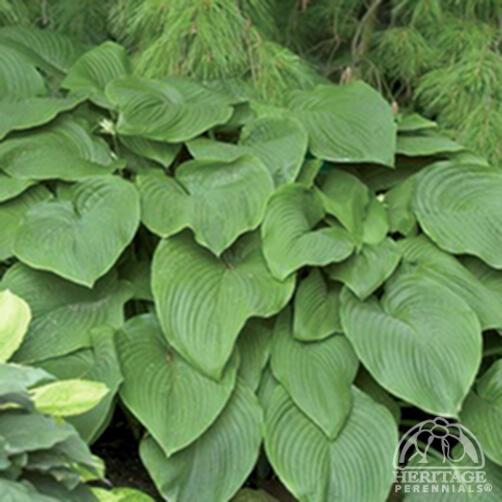Hosta ‘T. Rex’
Plant number: 1.276.920Hosta are among the most popular of perennials for shady areas, with hundreds of varieties now readily available. Plants form sturdy mounds of foliage, topped with lily-like blooms. This huge specimen selection has enormous matte-green leaves with a slightly droopy habit, just because of the large leaf size. White flowers appear in early summer. Looks spectacular as the sole occupant of a large container or tub. Hosta go completely dormant in the fall, and the dying foliage can be removed any time before mid spring. Easily divided in either spring or fall, but plants may be left alone for years. While deer enjoy eating Hosta, this variety may be slightly less palatable to deer than others. Registered by Ward, 1999 as ‘Tom Rex'. Further details for |
| All 302 results here | Alphabetical list of all 4,000+ perennials here |
Hosta ‘T. Rex’
Plant number: 1.276.920Hosta are among the most popular of perennials for shady areas, with hundreds of varieties now readily available. Plants form sturdy mounds of foliage, topped with lily-like blooms. This huge specimen selection has enormous matte-green leaves with a slightly droopy habit, just because of the large leaf size. White flowers appear in early summer. Looks spectacular as the sole occupant of a large container or tub. Hosta go completely dormant in the fall, and the dying foliage can be removed any time before mid spring. Easily divided in either spring or fall, but plants may be left alone for years. While deer enjoy eating Hosta, this variety may be slightly less palatable to deer than others. Registered by Ward, 1999 as ‘Tom Rex'. Further details for |






